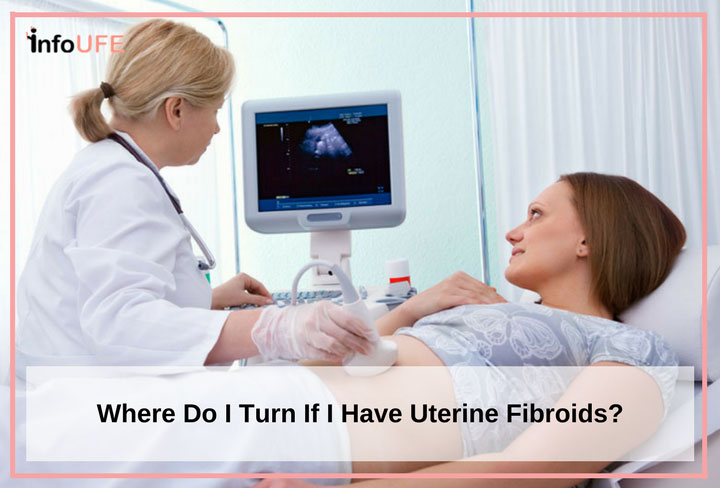
If you’ve been diagnosed and are researching ‘types of treatment for uterine fibroids’, you’ve probably learned that interventional radiologists perform uterine fibroid embolization (UFE), a minimally invasive procedure. This may bring up questions such as, “What is an interventional radiologist?” or “What is interventional radiology?” Before you can determine the best course of action to treat your uterine fibroids, you should fully understand all the aspects of each treatment option. Having an understanding of what it takes to become an interventional radiologist and the types of procedures that an interventional radiologist performs is a good start. You may even want to find an interventional radiologist to determine if the uterine fibroid embolization procedure is the right fit for you.
What is an Interventional Radiologist?
An interventional radiologist is a medical doctor specialized in the use of imaging technology, such as x-rays and ultrasound, to diagnose and treat a wide range of medical conditions. Diseases of the upper and lower limbs, abdomen, pelvis, and chest, but not the heart, can be treated by an interventional radiologist. Interventional procedures have replaced some procedures that previously could only be performed in a hospital with open surgery. Interventional procedures are often performed in an outpatient setting and are generally with less risk, pain, and a faster recovery time than surgery. Interventional radiologists frequently work with physicians of other specialties, such as gynecologists, oncologists, or surgeons, to create minimally invasive treatment plans for patients.
In 1964, the first interventional radiology procedure was performed. The procedure was angioplasty and involved the opening of a blocked blood vessel.[i] Embolization was performed 2 years later, initially to treat tumors and blood vessel abnormalities.[i]
What Interventional Radiologists Do
An interventional radiologist places a catheter through a small incision in the skin, into just the right place in the body to treat or diagnose a disease. The following types of technology are used to guide the placement of the catheter:
- Fluoroscopy, (a type of x-ray)
- Ultrasound
- Computed Tomography (CT)
- Magnetic Resonance Imaging (MRI)
Often, interventional radiologists become involved when the procedure would either be too risky or too difficult to do with surgery. Here are a few examples of diseases that can be treated by an interventional radiologist and how interventional radiology can be used for treatment.[ii]
- Uterine Fibroids – Small beads, delivered by a catheter, are used to block blood flow to uterine fibroids (by embolizing the blood vessels supplying the fibroid), ultimately causing them to shrink.
- Peripheral Artery Disease – Catheters are used to help with visualization of the blood vessels, and place stents to open narrowed or closed off blood vessels.
- Infection – If there is a pocket of infection, or pus, deep inside the body, a catheter can be placed to drain that fluid to relieve symptoms and to allow for testing of the infection.
- Blocked Bile Duct – A stent can be placed in the bile duct to keep the bile duct open.
- Cancer Tumors – Catheters can be used to inject medications directly into tumors.
- Varicose Veins – Dilated veins of the legs can be treated with radio waves or lasers to improve varicose veins.
- Compression Fractures – Certain fractures of the back, usually related to weak bones, can be treated with a type of cement that is injected into a fractured bone to alleviate pain.
Board Certification for Interventional Radiologists
The American Board of Radiology controls board certification for interventional radiologists. Throughout training, there are multiple board examinations, or specialized tests, to make sure that the doctor has the skills and knowledge to treat patients safely and effectively. All interventional radiologists should be board-certified or eligible for board certification.
An interventional radiologist is a highly specialized medical doctor with years of training to ensure that procedures, such as Uterine Fibroid Embolization, are performed safely and effectively. If you are curious about UFE as a treatment for your uterine fibroids, please do not hesitate to find an interventional radiologist to consult.
Sources:
[i] http://www.hopkinsmedicine.org/vascular/mMilestones.html
[ii] http://www.sirweb.org/patients/minimally-invasive-treatments/
[iii] http://www.theabr.org/abr-radiology-specialties-and-subspecialties
Additional Sources Consulted:
Society of Interventional Radiology. Who are interventional radiologists? http://www.sirweb.org/patients/ (accessed 12/3/2015).
RadiologyInfo.org. Professions in Interventional Radiology http://www.radiologyinfo.org/en/info.cfm?pg=professions-interventional-radiology (accessed 12/4/2015).


